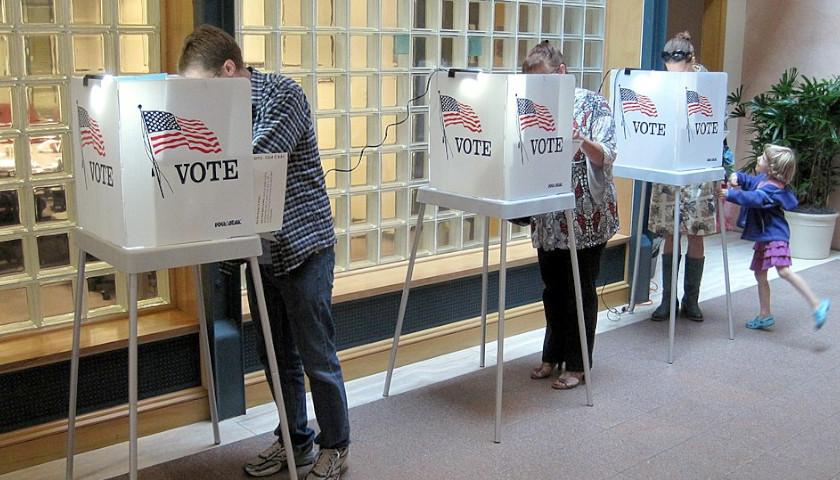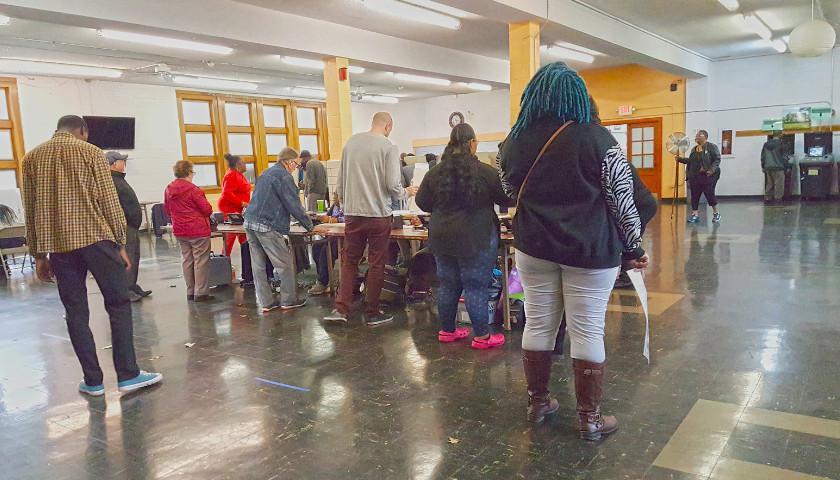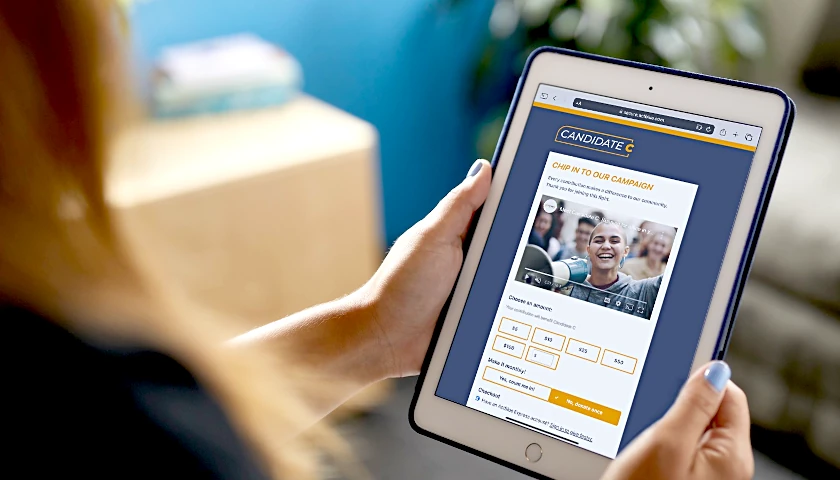The CONELRAD Group, a team of mostly former intelligence and military officers located primarily in southern Arizona that exposed what it believes is malfeasance in Pinal County’s 2022 election, has teamed up with the Pima Integrity Project (PIP) to expose similar malfeasance in Pima County’s elections. Led by database expert Tim Laux, the group of election researchers in PIP said it believes it found doctored canvassing reports and large numbers of newly registered voters who voted before they were eligible, among other illegal activities.
Jack Dona of CONELRAD told The Arizona Sun Times the findings could rise to the level of criminal racketeering. Dona holds 43 intelligence and technical certifications and diplomas from civilian colleges, technical schools, and military academies and served in military intelligence, retiring as a master sergeant/first sergeant.
“The overwhelming amount of circumstantial evidence presented by Tim Laux and the Pima Integrity Project leads me to believe that there is a strong indication of maladministration, malfeasance, and possible criminal activity that violates the federal RICO statute. Law enforcement authorities in Pima County need to investigate Laux’s findings regarding all of these ballots being mailed out,” he said. “If county election officials are knowingly mailing out ballots that have fraudulent addresses, then that could be a strong possibility of mail fraud, which is often a charging component of racketeering.”
PIP requested voter records and data from Pima County within the last few years to conduct its analysis. The project found that the canvassing report from the 2020 primary election appeared doctored. In multiple parts, all the words and numbers, including the numbers of registered Republicans, were in the same font and aligned — except for the totals of registered Democrats and other parties.
Next, PIP found that many voters who registered too late to vote in the last few elections were still allowed to vote, violating A.R.S. 16-120. That statute states that voters must be registered to vote at least 30 days before an election to vote.
Dozens or hundreds of voters violated this law in each election going back to 2016 when PIP began investigating, and in the 2020 general election, that number jumped to 3,153 voters.
Laux told The Sun Times the number of people who illegally voted before they were eligible could have tipped some of the races on the ballot. Elections around the country have been canceled due to merely a handful of illegal votes. In 2019, a judge ordered a new election for a U.S. House seat in Georgia after discovering four ineligible voters.
PIP’s investigative work highlighted a canvassing report from the 2020 election, which contained two disclaimers that appeared to violate the law. One said, “Two early ballot affidavit envelopes had two ballots inside and the processors left both ballots in count.” The other said, “Five ‘Unverified’ ballots were removed from the envelope and removed from the count.” PIP asked, “Can someone tell us when the law changed to allow for multiple unverified ballots to be counted or 2 ballots in 2 envelopes to be counted?”
Most law violations regarding illegal votes are class 6 felonies in Arizona. The report noted that this violates the Help America Vote Act (HAVA), which allows for an error rate of counting erroneous ballots of no more than one out of every 125,000.
“Not a single election we have data for should have been certified,” PIP’s report stated.
Another major problem PIP found was large numbers of registered voters listing the same address as their residence — which was often an empty lot. Six hundred sixty-one voters were listed at the Pima County Recorder’s address, 240 N. Stone.
A Speedway convenience store in Tucson had 115 registered voters use its location as their address. Convenience stores are not permitted by law to be used as residences for voter registration. PIP also found a large number of addresses that appeared to be rehabilitation centers that had numerous men registered to vote as Democrats or independents, with almost no Republicans.
Arizona legislators held a hearing in Tucson in December 2021, revealing similar numbers of registered voters at odd addresses. In the Sigma Alpha Epsilon fraternity located on E. 2nd, investigators found 27 registered voters, where the average age was 45, not college age.
A.R.S 16-544 requires county recorders to maintain the voter rolls by transferring voters to inactive status who fail to vote an early ballot in all elections for two consecutive election cycles. Inactive voters do not receive early ballots in the mail. Laux criticized the failure to clean the voter rolls in the report, “Even though County Recorder uses INELIGIBLE home-grown software, it still can be easily programmed to weed out voters not eligible to vote.”
Pima County received $950,000 in additional funding from the Arizona Legislature’s HB 2862 for cleaning up the voter rolls. However, the county spent much of it on “Promotional Items or computer hardware and software,” PIP found. “[W]hat do …[those items] … have to do with cleaning up the voter rolls?”
While the U.S. Census Bureau reported that the national voter registration rate is at 69.1 percent, many of Arizona’s counties have far higher percentages, including some with more than 100 percent of the eligible adult population. The Arizona Free Enterprise Club found that Pima County has 92 percent voter registration.
PIP said there were 109,464 voters with active status even though they had no voting history prior to 2020.
Laux found it concerning that the master voter registration database for early voting did not use certified software, and separate copies of the database were used for early voting, Election Day voting, and ballot scanning, which were updated in real time. He said only on Election Day was the database “frozen,” so no changes could be made.
“Addresses can be changed at election day vote centers,” the report stated. “How is this reconciled with the master database? Since processing continues after election day, at what point is the master database updated? Again, a very dangerous method of data processing.”
Due to the different databases in use, the report speculated, “Think about it, can a voter send in a mail-in ballot then go to a vote center and vote in person? Theoretically, yes. … What measures are in place to ensure a voter cannot vote by mail then go to a vote center on election day and vote a 2nd time?”
PIP said it believes this has led to discrepancies between the county recorder’s data and the Arizona Secretary of State’s (AZSOS) data. The organization found over 2,500 voter registration records in the former that cannot be reconciled with the latter, and similarly, over 300 voter registration records in the AZSOS’s data cannot be reconciled with the recorder’s data.
Another analysis by PIP found inconsistencies when assigning voter ID numbers. Voters who moved away had their ID numbers moved to inactive status and canceled. But if they moved back to the state, they weren’t necessarily reassigned their original number. Additionally, a look at voter IDs that were assigned on one specific date, December 31, 2018, found that they were assigned non-sequential numbers, and many of them were old numbers.
The report noted that 3,197 new voter registrations were submitted on October 5, 2020, the cutoff date to vote in the 2020 general election. No other day had even half that number of new registrations.
PIP had concerns about the number of ballots transported in ballot drop-off boxes, which are placed at polling locations for early voters. PIP analyzed the number of ballots picked up on various days from the locations and determined that, in some cases, there were too many ballots to fit in each box. “If the ballot box is sealed, short of picking it up and shaking it around, there Is no way that many ballots would fit,” the report said.
Additionally, on some days, there were no pickups at some locations. “This means that on several occasions during the early / emergency ballot process, ballot boxes were left unattended at the end of voting for that day,” the report said. “How many people have access to those locations during off hours? Maintenance / Janitorial staff? This seems to be a chain-of-custody issue.”
The report concluded with a few more concerns. “Of the 15 counties in Arizona, Pima County is the ONLY county that will not allow political observers at early vote locations.” PIP said the Pima County Recorder does not circulate a list of poll workers, so there is no way to determine whether the election workers at each vote center include any Republicans.
The Election Fairness Institute (EFI) is preparing to sue Pima County over the findings in the report, particularly the lack of certified software.
Mark Finchem, who founded the EFI, told The Sun Times, “It is clear that through emails and telephone conversations with Pima County officials, they have engaged in the use of database management software that has not been properly evaluated or certified by the secretary of state of Arizona, or the Election Assistance Commission, to manage voter roles, which is a direct impact on mail-in ballots, early voting, and Election Day voting. We view this as a serious concern, given that both state and federal elections can be negatively impacted by failing to engage in established best practices.”
Finchem is raising money for the litigation on his site. EFI is an IRS-approved 501(c) that is engaged in fixing election process defects and works in the public interest.
Laux said his group has more work ahead of it, including why inactive voters are still receiving mail-in ballots, why voters are assigned nonsequential voter ID numbers, and more specifics on the lack of ballot security transporting ballots from early polling locations.
– – –
Rachel Alexander is a reporter at The Arizona Sun Times and The Star News Network. Follow Rachel on Twitter / X. Email tips to [email protected].
Photo “People Voting” by Danny Howard. CC BY-SA 2.0.





